If you’re nervous about backing up a semi trailer, you’re not alone. I’ve been there.
The first few times I tried, I clipped a cone, stalled under pressure, and felt like quitting.
But I didn’t quit. I took notes. I asked for help. I practiced in empty lots until I could do it without overthinking.
That’s the experience I’m bringing here. I’m someone who’s been behind the wheel, sweating through those early mistakes.
This guide is simple. It’s made for drivers who want clear answers. No complicated words. Just a clean, safe process for backing up your trailer—whether you’re new or still getting comfortable.
By the end, you’ll know how to back up with more control—and less stress.
So let’s start!
Quick Guide
Backing up a semi trailer takes patience, planning, and practice. This quick guide gives you a clear view of each step to help you stay focused and in control.
| Step | What To Do | Why It Matters |
| Step#1 | Plan Your Backing Path | Walk the area, check surroundings, and know your final spot before moving. |
| Step#2 | Position the Tractor-Trailer Correctly | A clean setup makes the rest of the process smoother and easier. |
| Step#3 | Adjust Mirrors for Maximum Visibility | Good visibility helps you track the trailer and avoid blind spots. |
| Step#4 | Begin Backing Slowly and Smoothly | Slow movement gives you better control and time to react. |
| Step#5 | Use the “Sight Side” Backing When Possible | Backing toward your left gives you a clearer view of your trailer. |
| Step#6 | Get Out and Look (G.O.A.L) Often | Stepping out to double-check your surroundings can prevent costly mistakes. |
| Step#7 | Make Small Steering Corrections | Tiny turns keep your trailer steady and easier to control. |
| Step#8 | Align With the Dock or Final Position | Use your mirrors and small moves to line up straight and centered. |
| Step#9 | Final Adjustments and Secure the Vehicle | Set brakes, chock wheels, and check everything before stepping away. |
Each step here gives you a solid starting point, but there’s much more to learn. For full details, stories, and real-world tips, go check out the complete guide below—it’s all there for you.
Step#1 Plan Your Backing Path
Before you even shift into reverse, take time to plan. Backing up a semi trailer is all about what you do before the wheels move.
Know Where You’re Going
- Walk The Area: Get out of the cab and check your surroundings. You’ll often see obstacles you couldn’t spot from the driver’s seat.
- Spot Your Final Position: Know exactly where you want the trailer to end up. This helps you stay focused and steer with purpose.
- Check For Hazards: Look for things like fences, curbs, poles, or stacked pallets. These can sneak up on you if you’re not paying attention.
- Inspect The Ground: Uneven surfaces or loose gravel can mess up your control. Knowing what you’re driving over gives you a better plan.
Think About the Exit
- Plan Your Pull-Out: Make sure you can exit safely after backing in. A clean exit matters just as much as getting in.
- Avoid Tight Corners: If the space looks tight now, it’ll feel tighter when you’re in it. Give yourself room.
- Leave Space For Others: Don’t block docks or trap other drivers. Being aware of your surroundings helps everyone.
- Check Lighting Conditions: If it’s dark or foggy, make sure your lights are on. Poor visibility can hide real hazards.
I found that planning my path was my first real win. When I took a minute to slow down, breathe, and get clear on what I was doing, everything started to feel more under control. Also, using a quality trailer from a trusted manufacturer like Rhinotrail isn’t just helpful—it’s necessary for safe, consistent backing.
Step#2 Position the Tractor-Trailer Correctly
So you’ve planned your path. You know where you want the trailer to land. Now comes the part that sets everything up—getting your tractor-trailer in the right position before you even start backing up.
I used to skip this step or just eyeball it. I thought, “Close enough.” But I was wrong. Every time I started from a bad angle, I paid for it with extra pull-ups, sharp turns, and wasted time. Once I started taking setup seriously, everything changed.
This step doesn’t take long, but it makes all the difference. A good setup gives you more control and fewer corrections down the line. The more square and straight you start, the smoother your backing will go.
Start With a Wide Turn
- Give Yourself Room: Swing wide enough so your trailer has space to follow smoothly. Tight turns make your angle harder to correct later.
- Don’t Rush the Approach: Move slowly as you line up. Speed often leads to poor angles.
- Check Both Sides: Make sure you’re clear on the left and right. You’ll need space on both to complete your turn.
- Keep the Trailer as Straight as Possible: A straight setup gives you more control when backing.
Use Reference Points
- Pick a Guide Line: Use parking lines, dock edges, or a shadow on the pavement. It helps you stay on track.
- Line Up Your Drive Tires: Use your left side mirror to check how your rear tractor tires line up with your path.
- Watch the Trailer’s Swing: Your trailer can swing wide during setup. Be aware of your trailer tail.
Square Up With the Space
- Get As Straight As You Can: The more aligned you are, the less steering you’ll need while backing.
- Avoid Starting at an Angle: Starting crooked means more corrections—and more stress.
- Use a Pull-Forward if Needed: Don’t be afraid to reset. Even experienced drivers do it.
- Take Your Time: A clean setup saves you trouble later. This part is worth the extra seconds.
Getting your trailer and cab in the right spot takes practice, but it makes backing smoother every time. Take the time now—you’ll thank yourself later.
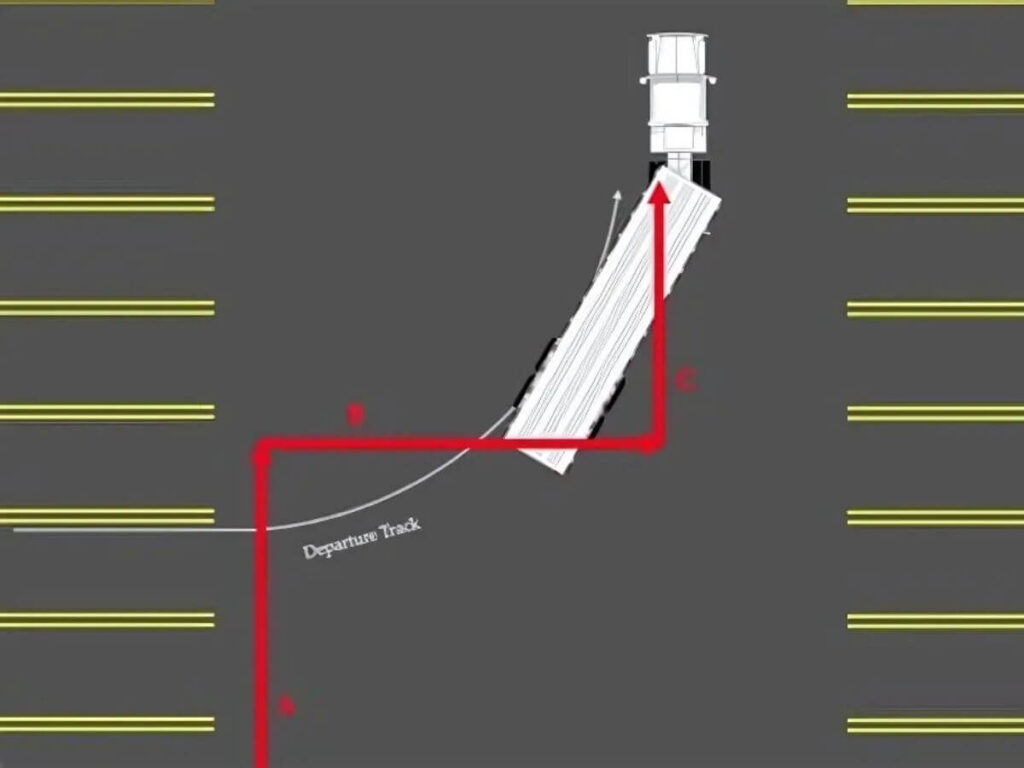
Step#3 Adjust Mirrors for Maximum Visibility
Now that your trailer is positioned correctly, your next move is to set your mirrors. This step is often rushed—but don’t skip it. Good mirror setup is what helps you “see” your trailer while backing.
Mirrors are your eyes outside the cab. Use them right, and you’ll avoid most surprises.
Check Mirror Angles Before Moving
- Adjust Both Mirrors: Make sure you can see the full length of your trailer’s sides, especially the rear corners.
- Keep the Trailer Edge in View: You should always be able to track how your trailer is drifting—left or right.
- Watch the Ground Too: Seeing the wheels and tires helps you catch curbs, lines, or soft ground.
- Sit in Driving Position: Don’t adjust mirrors while slouched or leaning. Sit as if you’re driving—then check.
Know Your Blind Spots
- Understand Blind Spots: These are the areas you can’t see in mirrors. Every truck has them.
- Move Around in Your Seat: Lean forward, back, and side to side. A small shift often gives a better view.
- Double Check Before Backing: Even with good mirrors, give yourself one last look around.
- Ask for Help if Needed: If you’re not 100% sure, use a spotter. It’s always better to ask than to guess.
Take the extra minute to get your view right—it’ll help you drive with more confidence and fewer close calls.

Step#4 Begin Backing Slowly and Smoothly
With your mirrors set and your trailer lined up, now it’s time to move. But don’t rush. Backing up a semi trailer isn’t about speed—it’s about control.
Moving slowly gives you time to think and react. You’ll catch mistakes before they get bigger.
- Start In Low Gear: Use the lowest reverse gear. This gives you better control and smoother movement.
- Keep Idle Power: Let the truck roll using just the engine’s idle power. No need to press the gas.
- Hold The Wheel Lightly: Don’t grip too tight. A loose grip lets you make small, smooth turns.
- Watch Both Mirrors: Keep checking both sides to track your trailer’s path. Don’t just stare at one mirror.
- Back In Short Bursts: Move a little, then pause and check. This helps you stay aware of your position.
- Listen To Your Truck: If something sounds off—stop. Noise often tells you more than your mirrors.
- Stay Calm: Pressure can make you rush. Take a breath and focus on each move.
Every smooth backup I’ve done started slow. Patience behind the wheel gives you the best chance at a clean, safe finish.
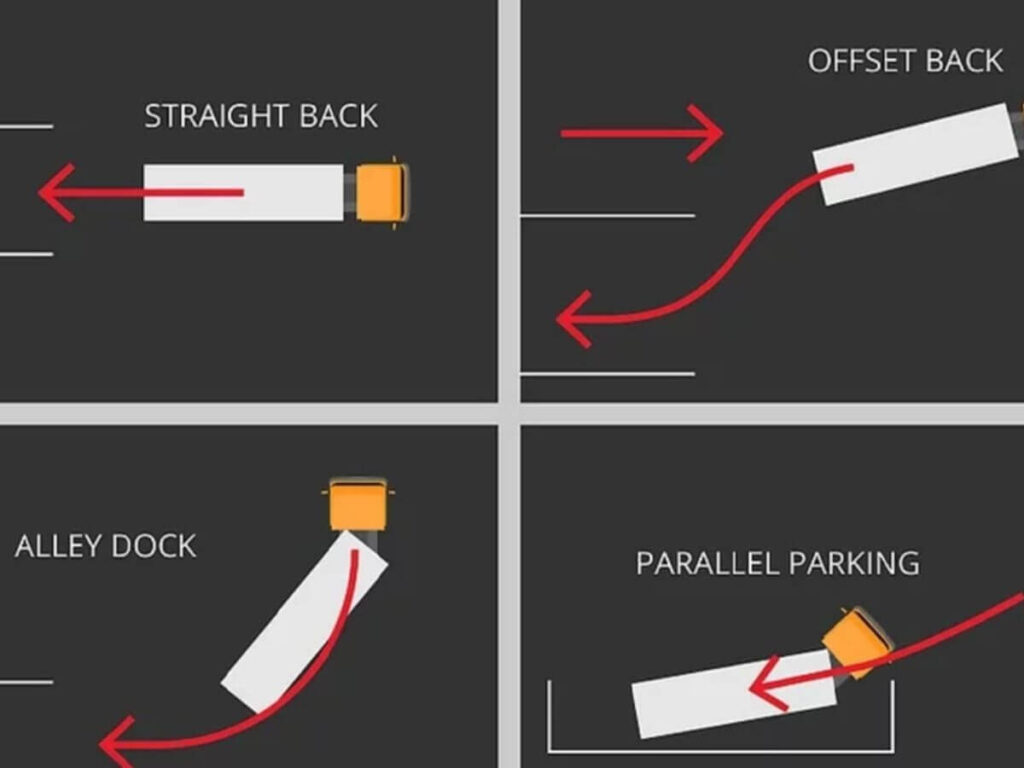
Step#5 Use the “Sight Side” Backing When Possible
Once you’ve started backing slowly, how you see the trailer matters. “Sight side” backing means turning left while backing up—where you can see the trailer clearly in your driver’s side mirror. This gives you more control because your view is wider and more direct.
Early on, there was a time I chose to back right instead of setting up left. It looked quicker. But I lost track of the trailer’s rear and came way too close to clipping a trailer next to me. That moment stuck with me.
Now, whenever I can, I pick the setup that lets me stay on the sight side.
- Look Ahead For Space: Before turning in, check if there’s enough room to swing wide for a left-side setup.
- Pull Forward And Angle Left: Set your truck up so the trailer entry point is on your left side.
- Use Your Left Mirror As A Guide: Watch the trailer’s path and how it follows your tractor.
- Track The Trailer’s Rear: Keep your eyes on the left corner of your trailer as you back in.
- Make Small Adjustments: Turn the wheel gently to stay on track with the target.
- Check Your Right Mirror Briefly: Use it to confirm clearance, but focus mainly on the left.
- Stop If You Lose Sight: If the trailer disappears from view, stop and reset your position.
Backing from the sight side takes a little more setup—but it makes everything easier. You’ll see more, feel calmer, and have a much better shot at getting it right on the first try.
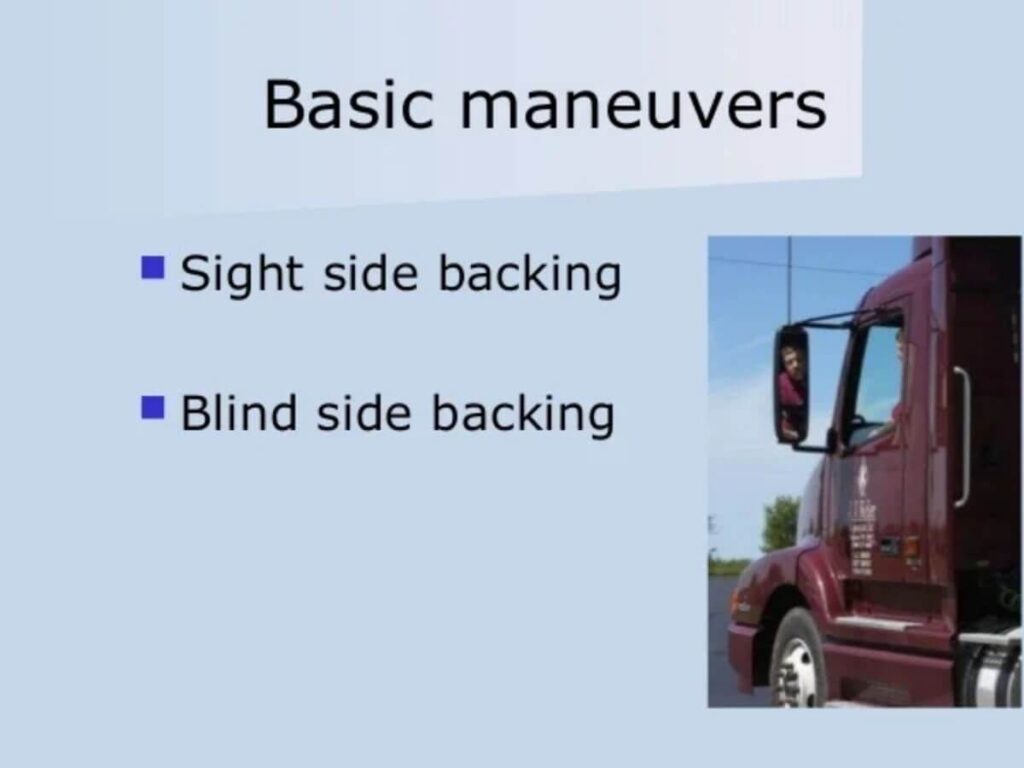
Step#6 Get Out and Look (G.O.A.L) Often
After setting up for a sight side back, your next smart habit is getting out and looking—also called G.O.A.L. This means stopping your truck, getting out of the cab, and checking the area around your trailer.
When To Get Out And Look
- Before You Start Backing: Always walk the space before you reverse. It gives you a full picture of what’s behind you.
- After A Setup Pull-Up: If you had to pull forward to fix your angle, get out again. Things change fast.
- When You Lose Sight Of The Trailer: If your trailer disappears from your mirrors, stop. Walk around and check.
- Near Tight Spots Or Obstacles: Anytime you’re close to fences, docks, or other trucks—get out and double-check.
What To Check While You’re Out
- Trailer Swing Clearance: Make sure the rear of your trailer won’t hit anything when turning.
- Ground Conditions: Look for potholes, debris, or soft ground that could shift your tires.
- Overhead Space: Check for signs, branches, or low roofs that might not show in mirrors.
- Final Stopping Point: Know exactly where you want the trailer to end—visualize it before you move again.
Getting out and looking doesn’t slow you down—it saves you from the kind of mistakes that take much longer to fix. I’ve learned that stepping out can be the smartest move you make all day.
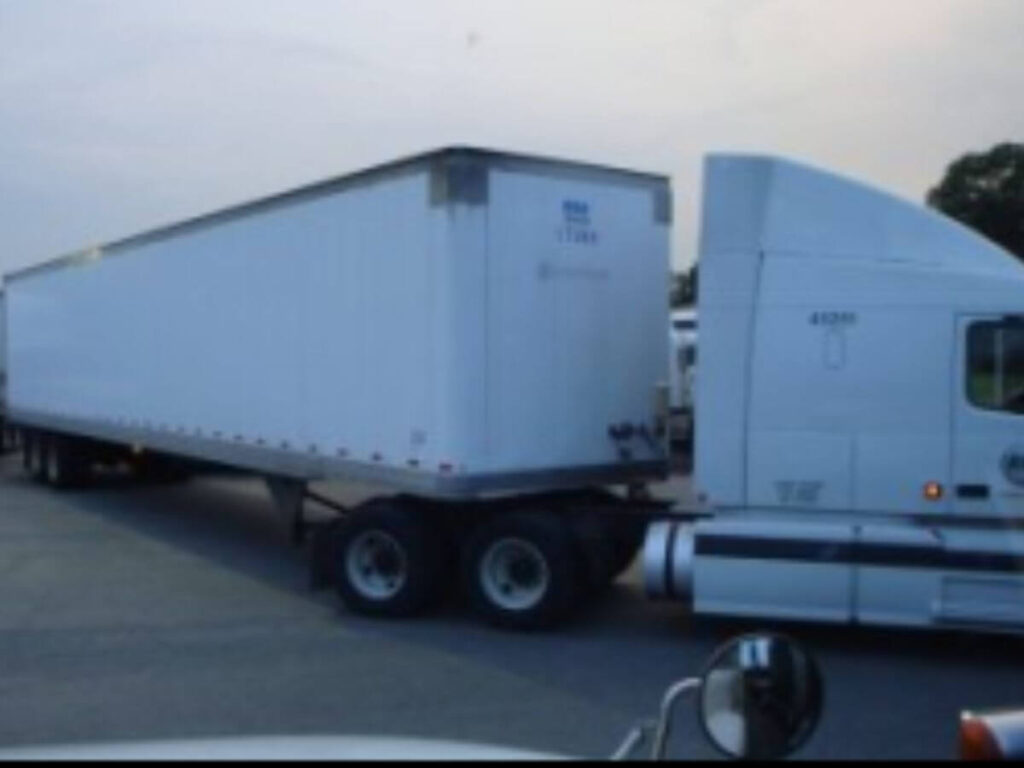
Step#7 Make Small Steering Corrections
Once you’ve looked around and feel good about your path, it’s time to focus on steering. One thing that took me a while to learn—less is more. Tiny turns go a long way when you’re backing up a semi.
- Start With Light Hand Movements: Move the wheel slowly. Even small turns make a big impact on the trailer.
- Watch Your Trailer’s Response: Look in your mirror after each turn. The trailer will start to follow—give it time.
- Hold Your Turn Briefly, Then Straighten: Once the trailer starts moving the way you want, straighten the wheel.
- Avoid Overcorrecting: Big mistakes usually happen after one big turn too many. Keep it smooth.
- Stay Focused On One Change At A Time: Don’t chase both sides. Fix one direction, then the other.
- Pause If It Feels Off: If things start going sideways—stop, breathe, and reset. It’s better than fighting the wheel.
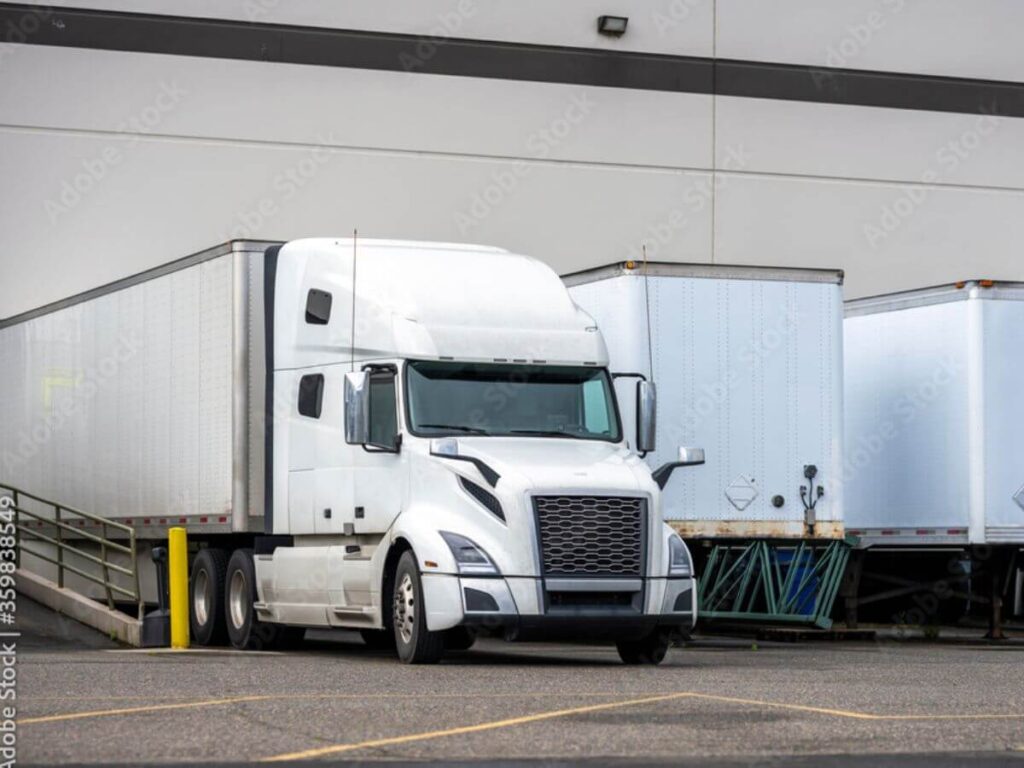
Step#8 Align With the Dock or Final Position
After making your small steering corrections, it’s time to line things up. You’re close now. The trailer just needs to land in the right spot—clean, straight, and safe.
This final step is slow and careful. Don’t rush it.
- Watch The Trailer’s Rear: Keep your eyes on the end of the trailer as it approaches the dock or parking spot.
- Use Both Mirrors: Look side to side. Switching between them helps keep the trailer centered.
- Keep The Trailer Straight: Focus on the angle, not just the distance. A straight trailer makes unloading easier.
- Make Small Adjustments: Light turns are all you need here. Avoid oversteering.
- Follow Visual Markers: Use dock lines, bumpers, or painted guides to help line up properly.
- Pull Forward If You Have To: Don’t fight a bad angle. A small reset now is quicker than struggling later.
There’s no better feeling than backing in smooth and straight. It shows control, skill, and respect for the job.
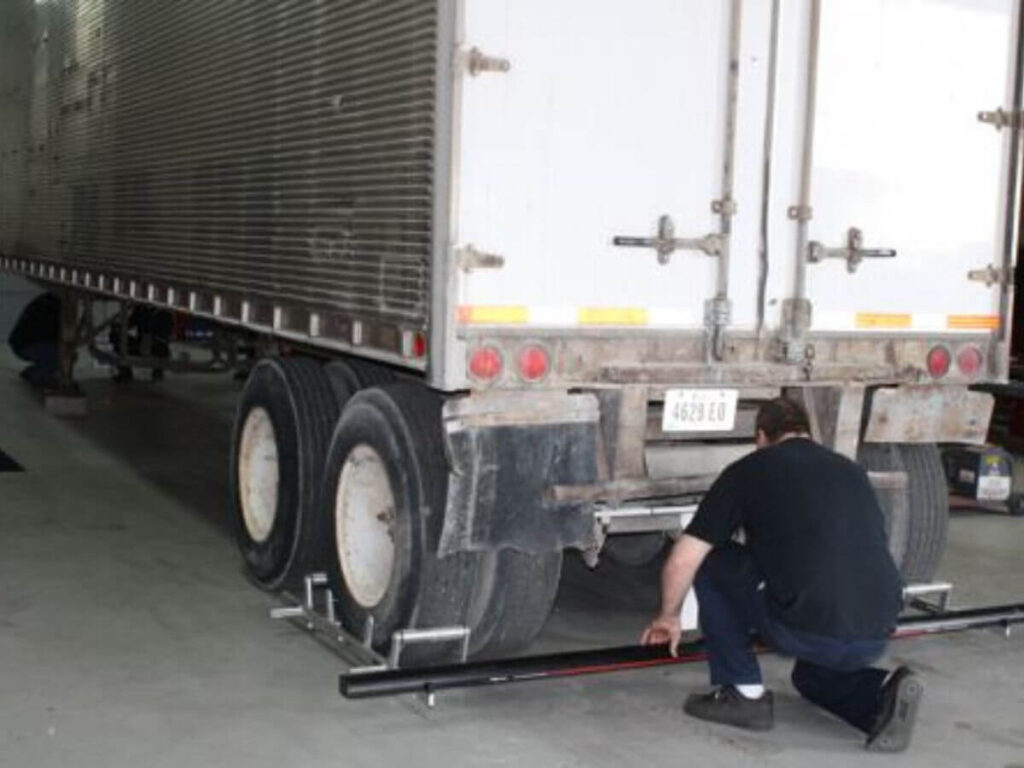
Step#9 Final Adjustments and Secure the Vehicle
Now that you’re lined up with the dock or parking space, it’s time to wrap things up. These last few steps might seem small—but they matter. They help protect your trailer, your load, and everyone around you.
- Double-Check The Trailer Position: Look at both sides to confirm you’re fully backed in and centered.
- Use The Tractor Brake: Apply the parking brake so the truck stays put.
- Chock The Wheels: Use wheel chocks when required, especially on loading docks.
- Turn Off The Engine: Once parked and safe, shut the engine off to avoid unnecessary idling.
- Check Your Lights: Make sure brake lights, marker lights, and hazard lights are working if needed.
- Look Around One Last Time: Step out and do a quick walkaround. Make sure nothing’s been left in harm’s way.
Finishing your backup the right way has become a habit for me—not just to protect the trailer, but because I like leaving the truck knowing everything’s safe, quiet, and right where it should be. It gives me peace of mind every single time I climb down from the cab.
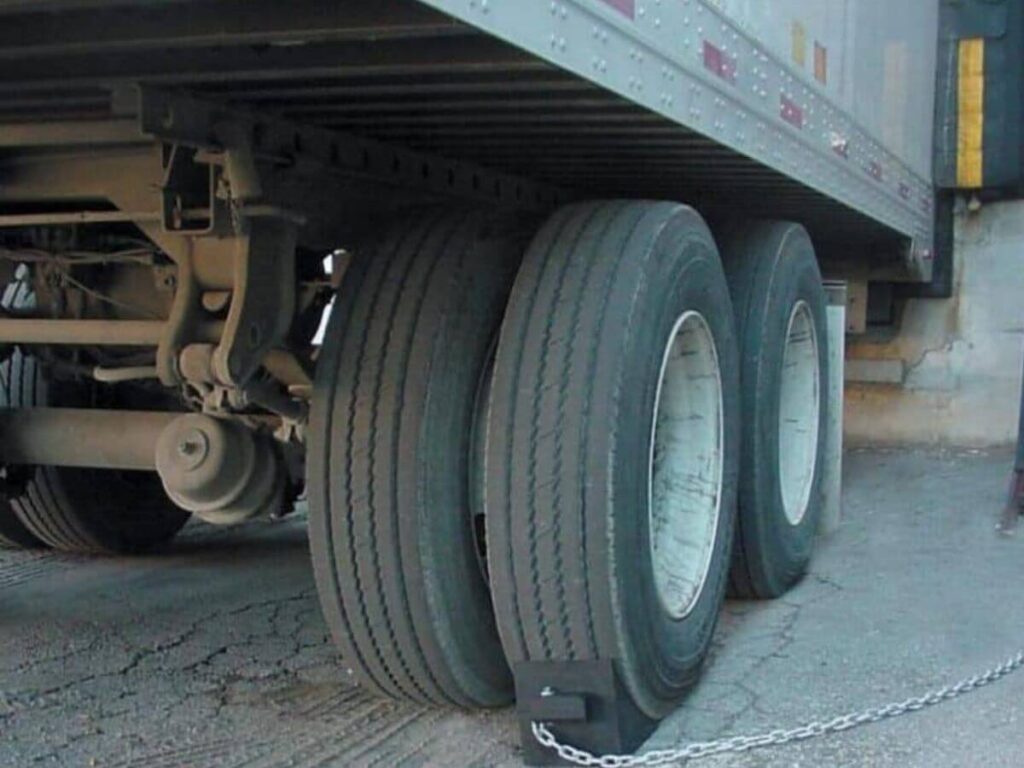
Conclusion
Backing up a semi isn’t about being perfect. It’s about learning each move—one step at a time.
You’ve learned how to plan, position, steer, and stay safe. I’ve made every mistake in this guide—and learned from all of them.
Still feeling unsure? That’s okay. We’ve helped drivers like you every day.
Contact Rhinotrail today to get support, training, or tools that fit your needs.


